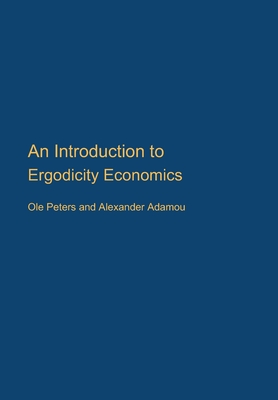An Introduction to Ergodicity Economics

An Introduction to Ergodicity Economics
This textbook introduces ergodicity economics (EE), placing the ergodicity question at the centre of economic decision-making: does expected value accurately represent what happens over time? Aimed at upper-level undergraduates, graduate students, researchers, and practitioners, this text challenges traditional models that rely on expected values without fully accounting for time as it affects real-life decisions. EE reveals that expected values match time averages only under specific conditions. When these conditions don't hold, we discover alternative concepts of rationality and new insights into risk and decision-making. This book provides essential mathematical tools and develops one core EE concept in depth: behavioural protocols that maximise long-term wealth growth. The result is a powerful framework with applications in individual decision-making, cooperation, insurance, economic inequality, and financial markets. Designed for a one-semester course, the book equips readers to contribute to the development of EE and apply its principles in advancing robust and equitable economic systems.
PRP: 1231.73 Lei
Acesta este Pretul Recomandat de Producator. Pretul de vanzare al produsului este afisat mai jos.
1108.56Lei
1108.56Lei
1231.73 LeiIndisponibil
Descrierea produsului
This textbook introduces ergodicity economics (EE), placing the ergodicity question at the centre of economic decision-making: does expected value accurately represent what happens over time? Aimed at upper-level undergraduates, graduate students, researchers, and practitioners, this text challenges traditional models that rely on expected values without fully accounting for time as it affects real-life decisions. EE reveals that expected values match time averages only under specific conditions. When these conditions don't hold, we discover alternative concepts of rationality and new insights into risk and decision-making. This book provides essential mathematical tools and develops one core EE concept in depth: behavioural protocols that maximise long-term wealth growth. The result is a powerful framework with applications in individual decision-making, cooperation, insurance, economic inequality, and financial markets. Designed for a one-semester course, the book equips readers to contribute to the development of EE and apply its principles in advancing robust and equitable economic systems.
Detaliile produsului









